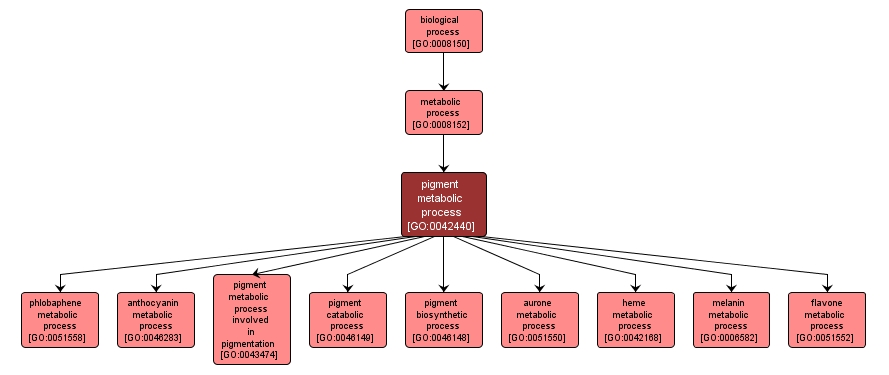GO TERM SUMMARY
|
| Name: |
pigment metabolic process |
| Acc: |
GO:0042440 |
| Aspect: |
Biological Process |
| Desc: |
The chemical reactions and pathways involving pigment, any general or particular coloring matter in living organisms, e.g. melanin. |
| Synonyms:
|
|

|
INTERACTIVE GO GRAPH
|














